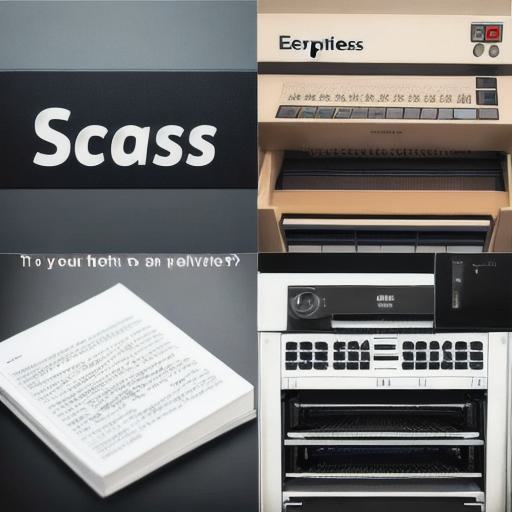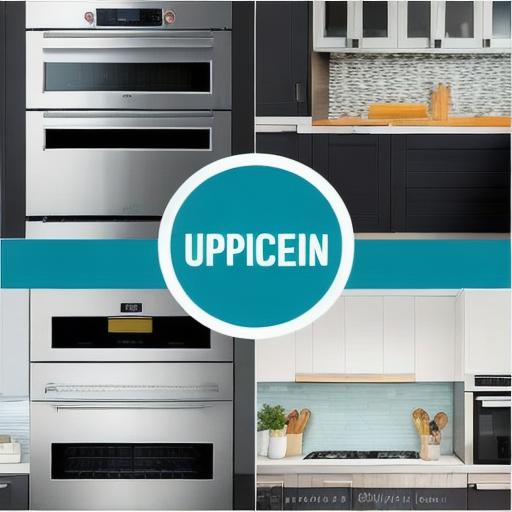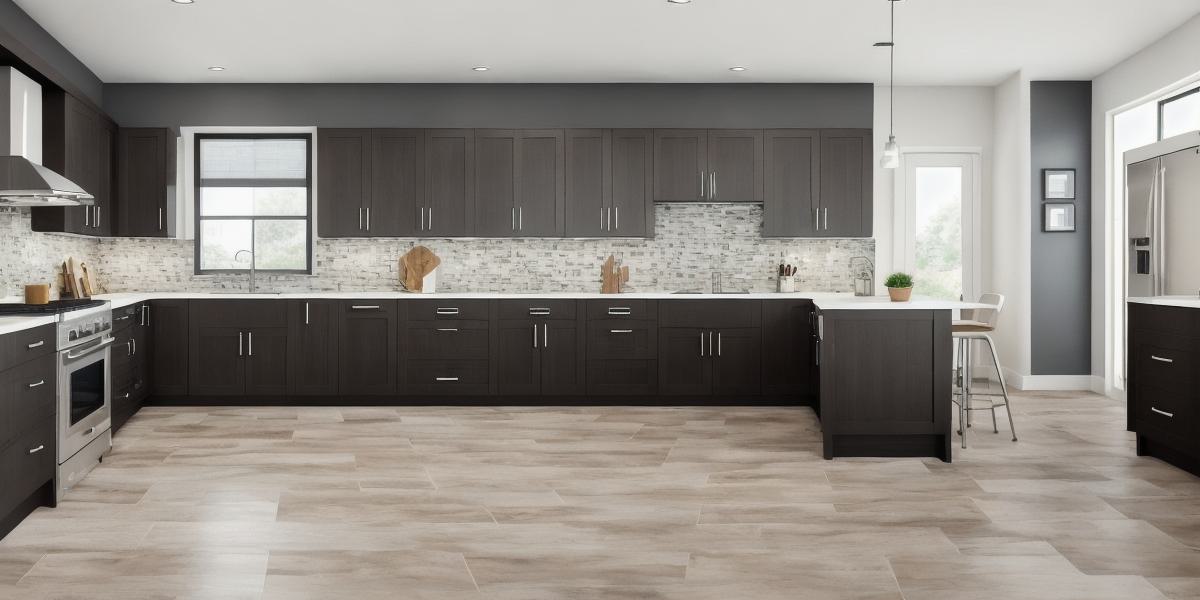Kitchen equipment is an essential asset for any business, whether you run a small diner or a large restaurant chain. With the right tools and machinery, you can streamline your operations, save time and money, and improve the overall quality of your food. However, marketing kitchen equipment effectively requires a well-thought-out strategy that takes into account your target audience, budget, and competition. In this article, we will explore some of the best strategies for marketing kitchen equipment effectively and how to optimize your content for SEO to attract more traffic to your website.
Understanding Your Target Audience
Before you start promoting your kitchen equipment, it is essential to understand who your target audience is. Are they small business owners looking to upgrade their kitchen facilities? Chefs looking for the latest tools and machinery? Or are they investors interested in investing in a new restaurant chain? Once you have identified your target audience, you can tailor your marketing messages to their specific needs and interests.
For example, if your target audience is small business owners, you may want to focus on the cost-saving benefits of your equipment or the ease of use. On the other hand, if your target audience is chefs, you may want to highlight the quality and precision of your equipment or the versatility of your machinery.
Conducting Market Research
Market research is an essential part of any marketing strategy. It involves gathering data about your target market, your competitors, and your customers’ needs and preferences. By conducting market research, you can identify trends, develop new products or services, and improve your existing offerings.
For instance, if you notice that there is a growing demand for organic or vegan kitchen equipment, you can expand your product line to meet this trend. Alternatively, if you discover that your competitors are offering discounts on their machinery, you may want to adjust your pricing strategy accordingly.
Optimizing Your Content for SEO
Search engine optimization (SEO) is a crucial aspect of any online marketing strategy. It involves optimizing your website’s content to improve its visibility and ranking in search engines like Google, Bing, and Yahoo. Some effective SEO techniques for promoting kitchen equipment include:
- Conducting keyword research: Identify the keywords and phrases that potential customers are using to search for kitchen equipment online. Use these keywords throughout your website’s content, including headings, subheadings, and body text.
- Creating high-quality content: Produce informative and engaging content that provides value to your target audience. This could include blog posts, case studies, product descriptions, or videos. Make sure that your content is well-researched, well-written, and optimized for SEO.
- Using meta tags: Meta tags are HTML elements that provide additional information about your website’s content to search engines. Use meta tags like title tags, header tags, and meta descriptions to include relevant keywords and phrases.
- Building backlinks: Backlinks are links from other websites that point to your website. They are a powerful SEO technique that can improve your website’s authority and visibility in search engine results pages (SERPs).
- Using social media: Social media platforms like Facebook, Twitter, and Instagram can be used to promote your kitchen equipment to a wider audience. Share engaging content, participate in industry discussions, and use relevant hashtags to increase your reach.
Case Studies and Personal Experiences

Case studies and personal experiences can help you connect with your target audience on an emotional level. By sharing real-life examples of how your equipment has helped other businesses succeed, you can demonstrate the value and effectiveness of your products.
For instance, you could share a case study of a small diner that upgraded its kitchen facilities using your equipment and saw a significant increase in sales and customer satisfaction. Alternatively, you could share a personal experience of how your equipment helped you improve the quality of your food or streamline your operations.
Structuring Your Text with Headings and Subheadings
Structuring your text with headings and subheadings can make it easier for readers to scan and understand your content. It also helps search engines to crawl and index your website more efficiently. Use clear and concise headings that accurately reflect the content of each section, and use subheadings to break up longer paragraphs and provide additional information.
Using Research and Experiments to Substantiate Main Points
Using research and experiments to substantiate your main points can help you build credibility with your target audience. Provide data and statistics that support your claims, and share case studies or testimonials from satisfied customers. You could also conduct surveys or experiments to gather feedback on your products or services, and use this information to improve your offerings.
Including Real-Life Examples to Illustrate the Points Being Made
Real-life examples can help you illustrate the points being made in your content more effectively. Use images, videos, infographics, or other visual aids to show how your equipment has helped businesses succeed in real life. This will make your content more engaging and memorable, and help your target audience to better understand the value of your products.
Ending the Text with a Thought-Provoking Ending
Ending your text with a thought-provoking ending can leave a lasting impression on your readers and encourage them to take action. Summarize the main points of your content, ask a provocative question, or provide a call to action that encourages your target audience to engage with your brand. This will help you to build momentum and keep your readers engaged.
Writing in Clear, Concise, and Accessible Language
Writing in clear, concise, and accessible language is essential for effective communication with your target audience. Avoid using jargon or overly complex words that may confuse or alienate your readers. Instead, use simple, straightforward language that connects with your readers on a personal level. Use analogies, comparisons, and other language techniques to make your content more engaging and memorable.
Comparing and Contrasting Products or Services
Comparing and contrasting products or services can help you showcase the unique features and benefits of your offerings. Provide side-by-side comparisons of your equipment with that of your competitors, highlighting the strengths and weaknesses of each option. This will help your target audience to make informed decisions and choose the best product for their needs.
Using Graphs or Tables Whenever Possible
Graphs and tables can be an effective way to present data and information in a visually appealing and easy-to-understand format. Use graphs or tables to show trends, compare data sets, or illustrate the benefits of your equipment. This will help your target audience to better understand the value of your products and make informed decisions.

FAQs
How often should I update my kitchen equipment?
The frequency of updating your kitchen equipment depends on several factors such as usage, maintenance, and technology advancements. It is recommended to review your equipment regularly and update it when necessary to ensure optimal performance and efficiency.
Can I get financing for my kitchen equipment purchase?
Yes, there are several financing options available for purchasing kitchen equipment, including loans, leases, and grants. These options vary depending on the type of business you own, your creditworthiness, and other factors. It is recommended to research and compare different financing options to find the best fit for your needs.
What is the warranty on my kitchen equipment?
The warranty on your kitchen equipment varies depending on the manufacturer and the specific product. Some manufacturers offer standard warranties of one to three years, while others provide extended warranties or maintenance agreements. It is recommended to review the manufacturer’s warranty policy before purchasing your equipment to understand what is covered and how long it lasts.
How do I maintain my kitchen equipment?
Maintaining your kitchen equipment is crucial for its longevity and efficiency. Regular maintenance tasks include cleaning, lubricating, and calibrating your equipment. It is recommended to follow the manufacturer’s maintenance guidelines and schedule regular inspections by a qualified technician.
How do I choose the right kitchen equipment for my business?
Choosing the right kitchen equipment for your business requires careful consideration of several factors such as your budget, space constraints, menu offerings, and cooking volume. It is recommended to research different types of equipment, consult with industry experts, and evaluate your options based on your specific needs and requirements.




